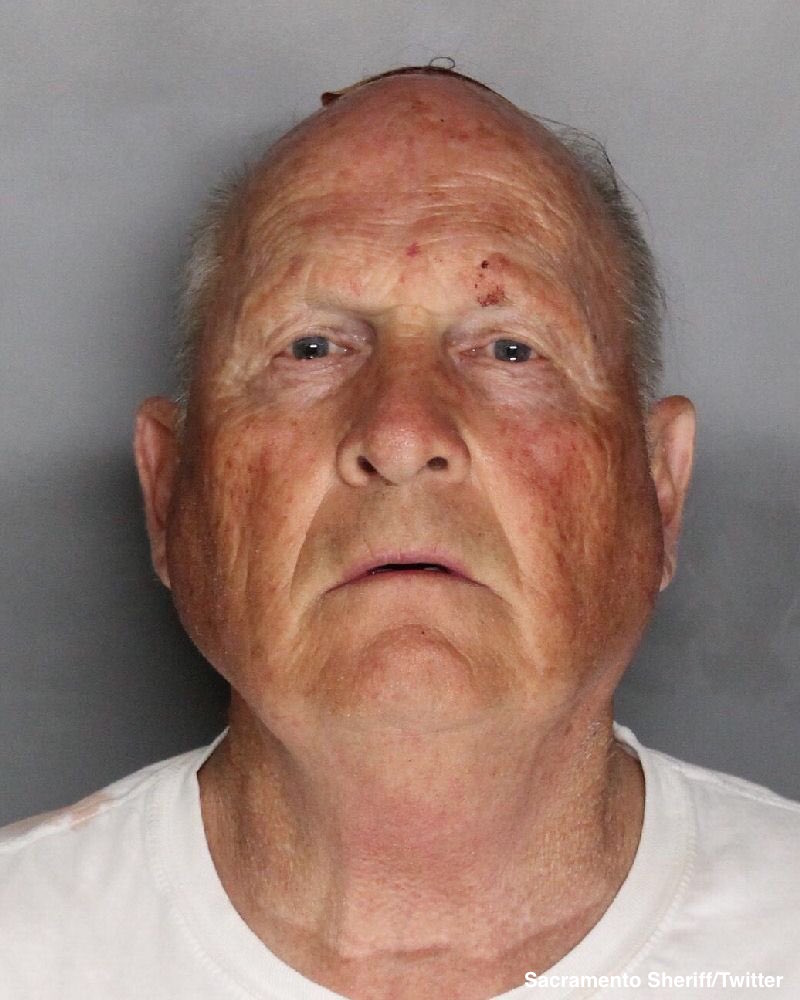Police used DNA from discarded items to link suspect to Golden State Killer murders

Police identified Joseph James DeAngelo as a suspect in the Golden State Killer murders.
Corrected and Updated: Police announced Wednesday that they arrested the suspect for the Golden State Killer murders after linking him to the crimes through DNA on two discarded items.
At first, police did not explain why they focused on 72-year-old Joseph James DeAngelo, a former police officer and retiree living in Citrus Heights, California, report the Los Angeles Times, the Sacramento Bee and the New York Times. But a researcher who worked with Michelle McNamara, the late author who obsessively researched the case, had a hunch, Slate reported in a story noted by the Daily Mail.
Police say they didn’t focus on DeAngelo until six days ago. He has been charged with eight counts of murder, though police believe the Golden State Killer is responsible for 12 slayings and 45 rapes. The crimes occurred between 1974 and mid-1986. Police believed the crimes were linked because of DNA and similar rituals used by the suspect.
Police began using DNA to solve crimes in the mid-1980s.
The hunch by the researcher, Paul Haynes, turned out to be correct, the New York Times reports. Haynes theorized that police used DNA markers from ancestry websites to identify a possible ancestor of the killer, and then followed the family tree down to DeAngelo.
Steve Grippi, the assistant chief in the Sacramento district attorney’s office, told the Times that police submitted DNA from crime scenes to a private online DNA database, and found distant relatives of DeAngelo’s.
The Supreme Court ruled in 1988 that there is no right to privacy in trash, according to Law & Crime. The case was California v. Greenwood.
Bruce Harrington, a brother of one of the Golden State Killer’s victims, had also focused on DNA, helping pass a successful referendum in 2004 that required the collection of DNA from anyone arrested on a felony charge, the Sacramento Bee reports in a separate story.
The California Supreme Court upheld the law in a 4-3 decision on April 2, the Los Angeles Times reported. The court stressed that its ruling applied only to the case before it involving a man who was convicted of felony charges, and said the law could still be challenged in other cases.
DeAngelo was a police officer in Auburn, California in the 1970s until his firing based on allegations that he had shoplifted a hammer and dog repellent.
McNamara’s book about the case, I’ll Be Gone After Dark, was published posthumously in February. Her husband, Patton Oswalt, had hired Haynes, who had previously worked with McNamara on the book, along with a journalist to finish the book after McNamara’s 2016 death, the New York Times reports in this story. Police said information in the book didn’t directly lead to DeAngelo’s arrest.
Updated at 10:16 a.m. to correct the name used for the series of murders to “Golden State Killer.” Updated at 5:30 to report that DNA websites were used to find the suspect.



